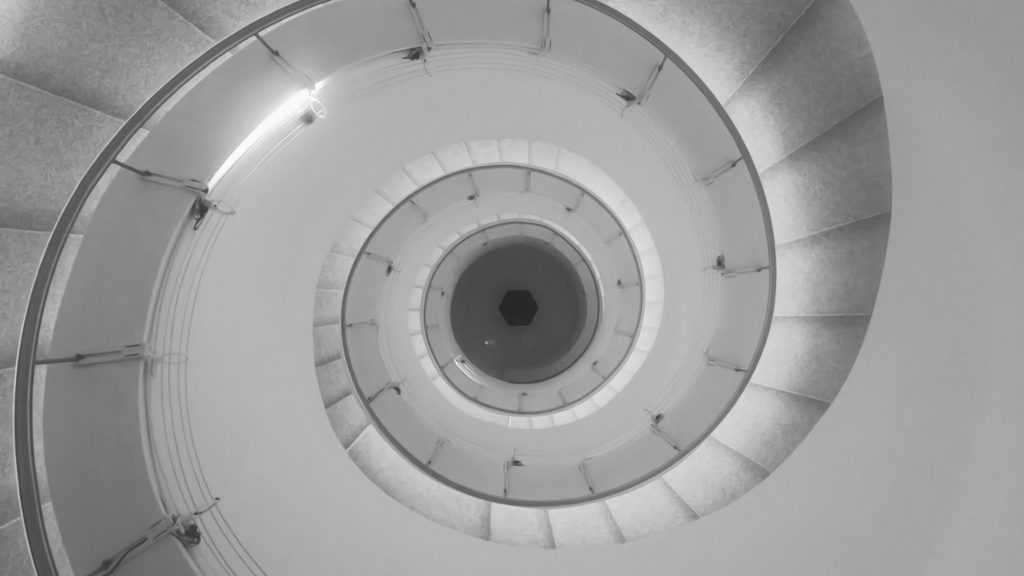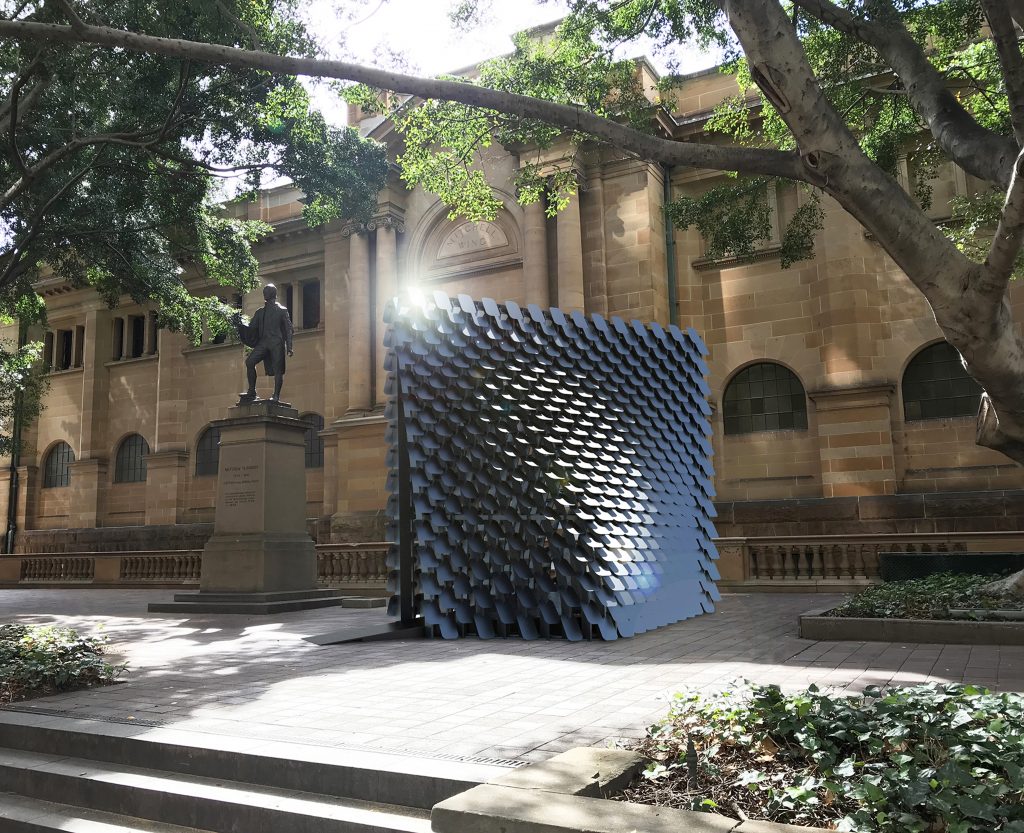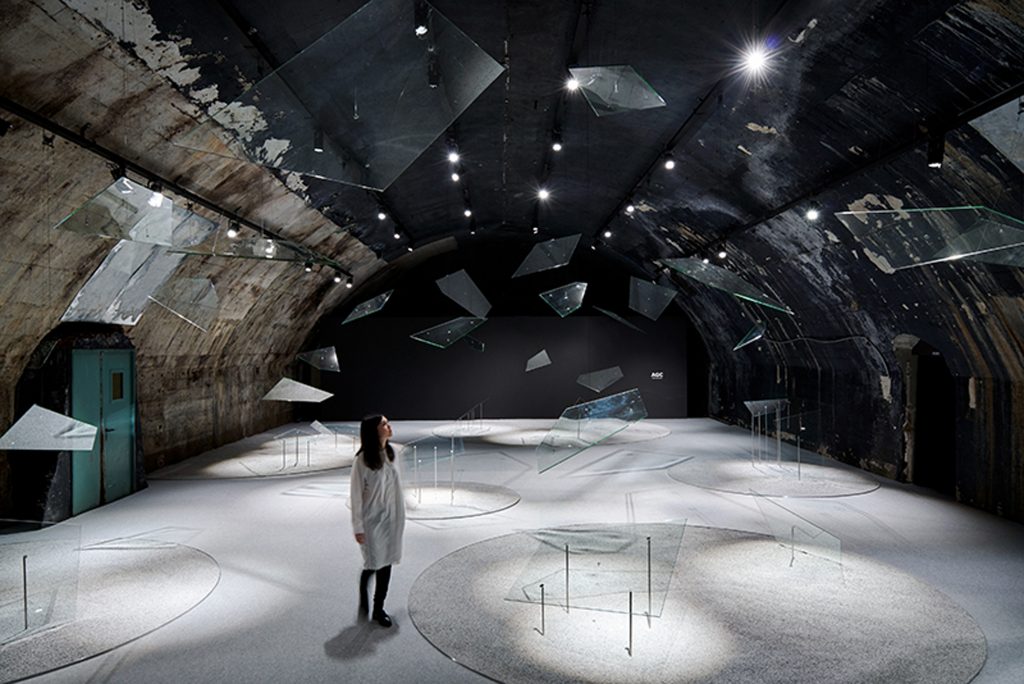These installations allow the visitors to hear the work, rather than simply look at it and sometimes encouraging them to help bring the work to life by contributing their own sounds.

Spiralalala by Pan Generator
Pan Generator, a studio of sound and vision artists, recently took voice recording to another level when it ‘reimagined’ a spiral staircase as a voice-transforming instrument. It took over the iconic spiral staircase of the Szczecin Philharmonic in Poland during the MDF Festival (Music.Design.Form), to create Spiralalala, which asked visitors to record their voices with the sounds then synchronised with the movement of balls falling along a 35m long track descending the staircase. Custom-built gates with infrared sensors and radio modules allowed the recorded sounds to be synchronised with the speed and position of the ball. At the same time sensors and microcontrollers measured the speed of the ball passing the gates created a light trail as it spiralled down the staircase.
Five speakers – one per floor, allowed the artists to achieve ‘spatialisation’ of the sound to create the illusion of the sound “falling” with the ball. And as a finishing touch, they also used projection-mapping, synchronised with the motion of the ball, to make the whole thing more visible for the people standing in the lobby at the bottom of the staircase. Says Pan Generator: “In the end we’ve created a playful and engaging, audience-driven audio-visual performance that exemplifies our vision for integrating new media art practice with architecture and breathing life into static form thanks to digital technology.”
For anyone not familiar with Poland’s MDF Festival in Szczecin. It strives to blue the boundaries between new ideas, inspirations and experiments, particularly regarding music and applied art. The festival consists of events of various types: chamber and symphony concerts, exhibitions, workshops, meetings and discussions, happenings, animations and multimedia presentations, installations, visual and sound visualizations, attracting artists from across Poland and the world. We can all identify with the idea of standing in a gallery pondering works of art for long periods at a time, perhaps trying to understand the meaning of the piece or the frame of mind of the artist when she/he was working. But have you ever wondered what a painting might sound like?

80Hz by Thomas WingEvans and DX Lab
Well, if you happened to be in the State Library for New South Wales, Australia recently you would have been able to ‘listen’ to priceless works of art. To celebrate the opening of its new Michael Crouch Family Galleries, the State Library commissioned British designer and architect Thomas Wing-Evans to create an ‘architectural sound lab’ – a pavilion hosting the ‘sonification’ of 44 works of art for an exhibition called 80Hz.
Wing-Evans worked alongside the State Library’s innovation lab – DX Lab and sound production specialists Sonar Sound, who developed a computer programme able to translate visual data into sound. The complexity of the colours and tones of the individual paintings was analysed, while the programme also used face detection and data such as location and subject.
Inside the pavilion, visitors were able to select an image and listen to its soundscape resonate through the Wing-Evan’s building.
Milan Design Week 2018 saw a novel ‘soundscape’ created inside an old warehouse at Milano Centrale Station by Mandai Architects using technology developed by AGC Asahi Glass.

Soundscapes, photo by Akihide Mishima & Mandai Architects
The installation used sound-generating glass that incorporates an intermediary layer between the panes, which, much like a speaker’s diaphragm, mitigates the inherent resonance characteristics of glass to produce clear, beautiful sounds. Each of the 35-sheets of glass scattered throughout the space emitted a different natural sound, transmitted through a multi-source audio setup that gave a multi-layered soundscape depending on the location at which it was being heard.
For example, birdsong could be heard from high-up locations, while the sounds of crashing waves could be heard coming from somewhere below, all of which combined to create scattered, invisible “chambers” of sound within the overall space.
All the sounds were taken from field recordings, while the overarching exhibit theme was the ‘water cycle’, whereby water vapour turns into water droplets, which then flow as water through streams until they reach the ocean.